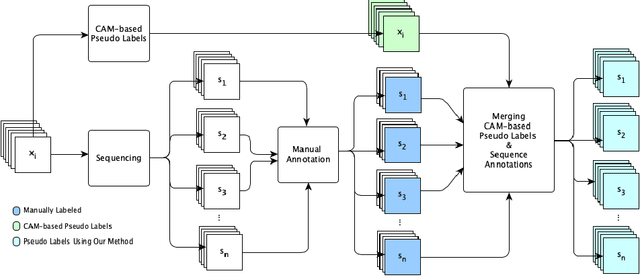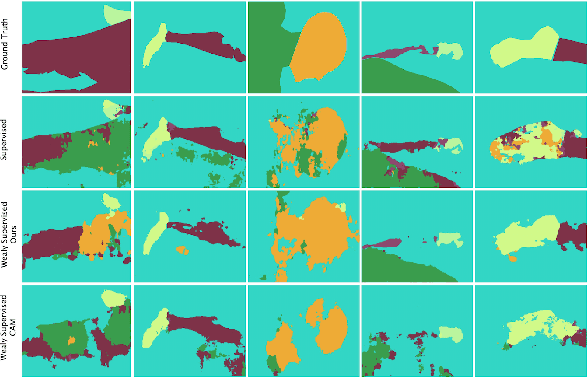Pseudo Pixel-level Labeling for Images with Evolving Content
Paper and Code
May 20, 2021


Annotating images for semantic segmentation requires intense manual labor and is a time-consuming and expensive task especially for domains with a scarcity of experts, such as Forensic Anthropology. We leverage the evolving nature of images depicting the decay process in human decomposition data to design a simple yet effective pseudo-pixel-level label generation technique to reduce the amount of effort for manual annotation of such images. We first identify sequences of images with a minimum variation that are most suitable to share the same or similar annotation using an unsupervised approach. Given one user-annotated image in each sequence, we propagate the annotation to the remaining images in the sequence by merging it with annotations produced by a state-of-the-art CAM-based pseudo label generation technique. To evaluate the quality of our pseudo-pixel-level labels, we train two semantic segmentation models with VGG and ResNet backbones on images labeled using our pseudo labeling method and those of a state-of-the-art method. The results indicate that using our pseudo-labels instead of those generated using the state-of-the-art method in the training process improves the mean-IoU and the frequency-weighted-IoU of the VGG and ResNet-based semantic segmentation models by 3.36%, 2.58%, 10.39%, and 12.91% respectively.
 Add to Chrome
Add to Chrome Add to Firefox
Add to Firefox Add to Edge
Add to Edge